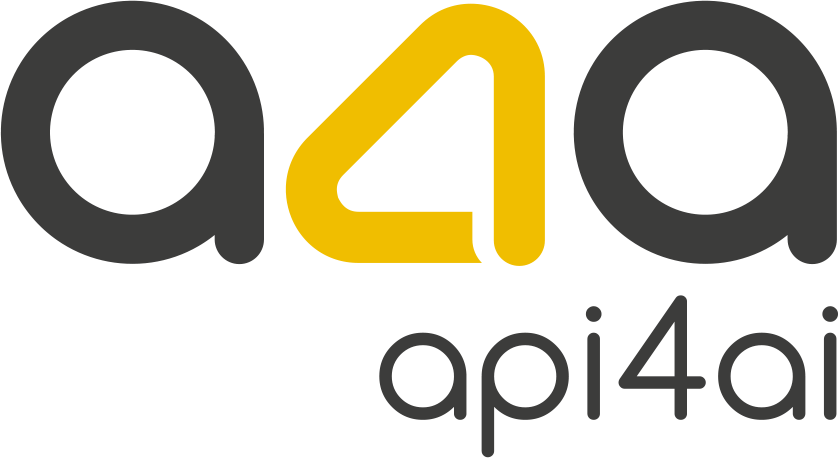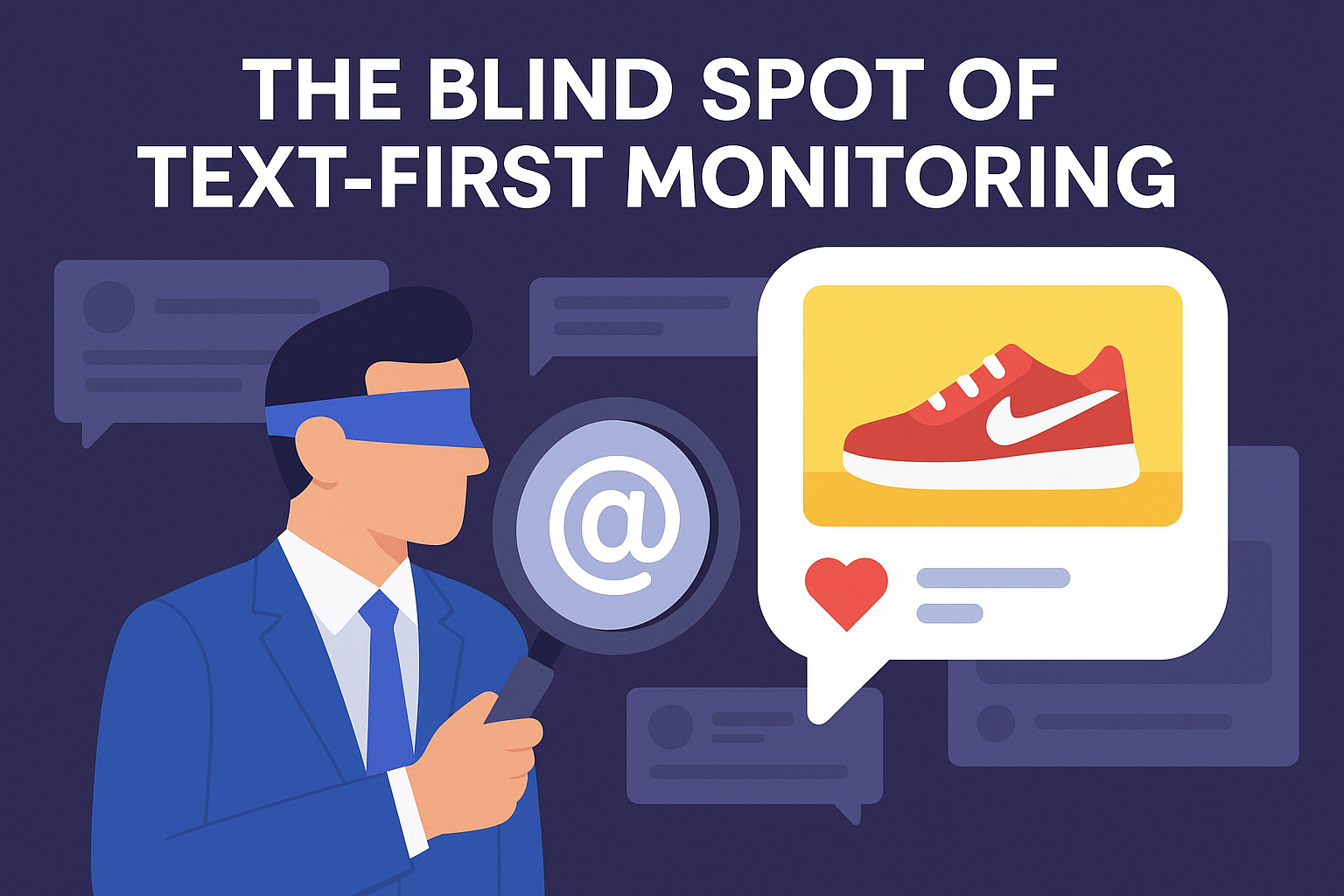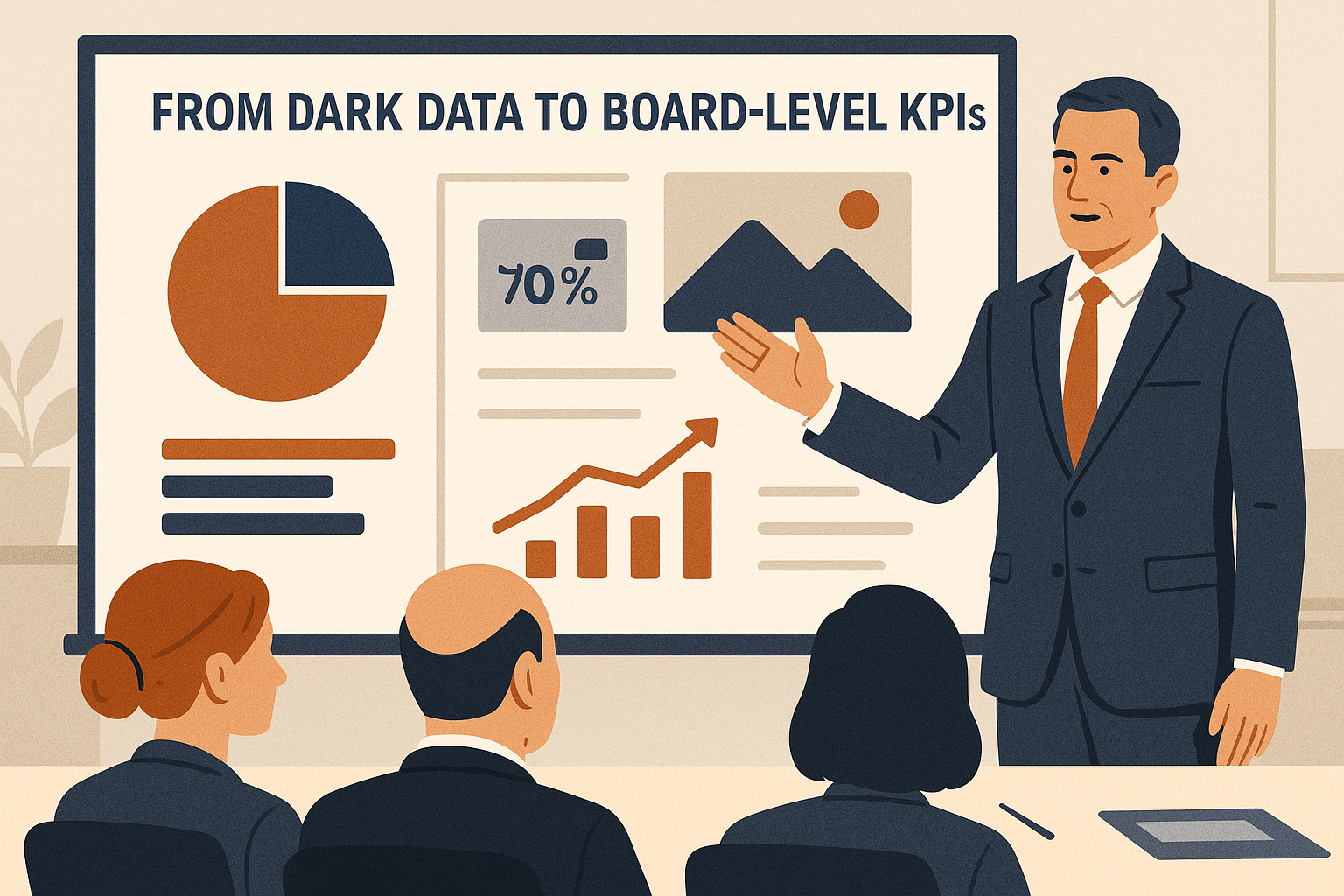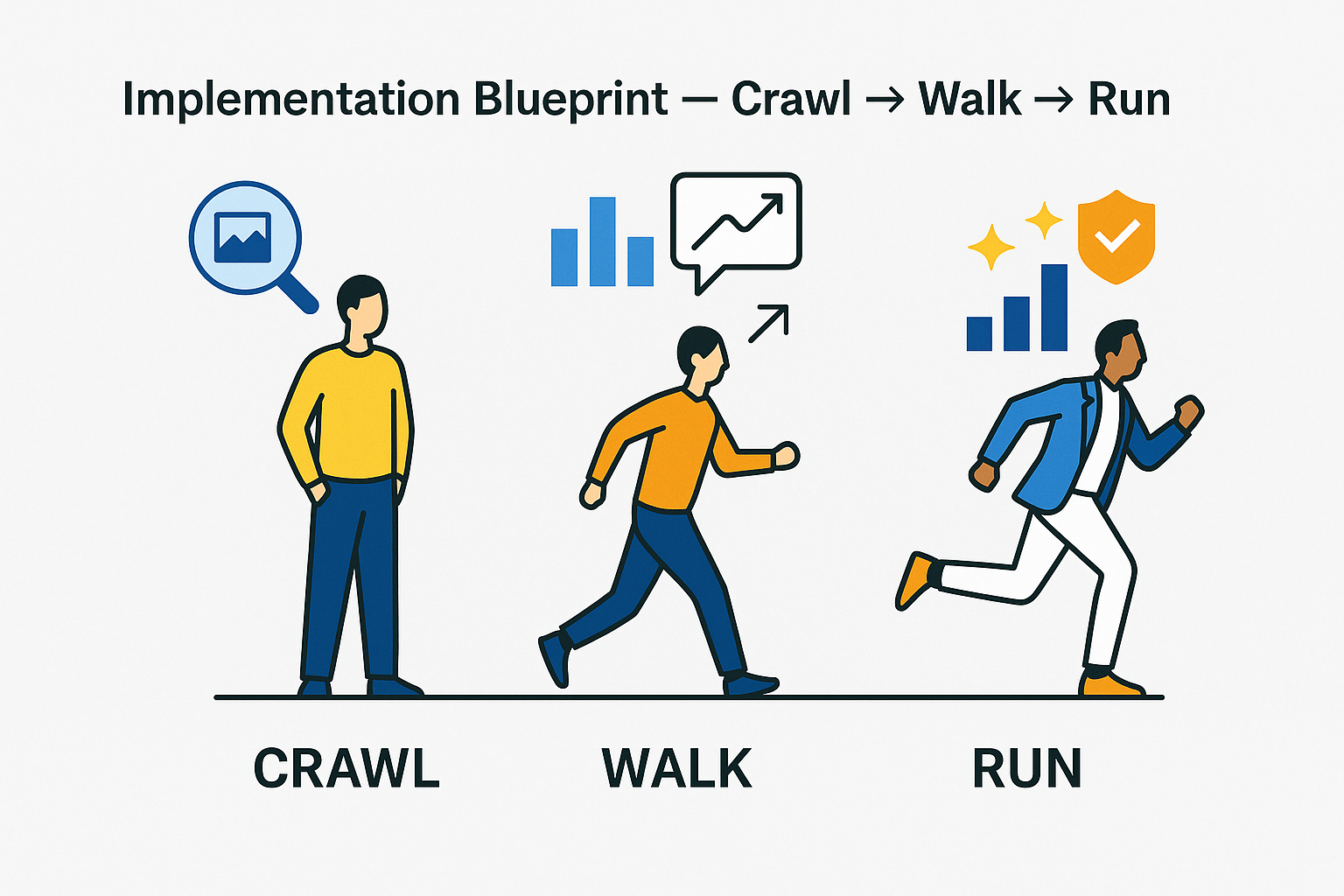Social Listening 3.0: Visual Mentions You’re Missing
Introduction — The Hidden Majority of Brand Signals
Every day, billions of images flood social platforms — Instagram, TikTok, X, Facebook, and beyond. Users post photos of their meals, outfits, gadgets, and experiences. But while brand managers and marketing teams scan the text — searching for hashtags, mentions, and sentiment — they’re often overlooking the larger conversation happening silently in pixels.
Traditional social listening systems are built on text. They track @handles, hashtags, keywords, and comments. But in today’s visual-first social media landscape, that’s no longer enough. Studies show that up to 70% of brand-related content on social platforms appears only in images — with no accompanying brand mention in the caption or comment. That means the majority of your online brand presence may be completely invisible to your current analytics stack.
For example, a festivalgoer might post a selfie holding your beverage. A customer might snap a photo of your product on their kitchen counter. A tourist might share a landscape that includes your hotel signage. These are real endorsements, experiences, and stories — but they’re lost in the noise if your systems can’t see them.
This invisible layer of brand data — what we call visual mentions — represents both risk and opportunity:
Opportunity, because these “silent fans” are advocates your marketing team isn’t even aware of.
Risk, because dissatisfied customers might be posting imagery that erodes trust, without triggering any alert.
Enter Visual Social Listening — or, as we call it, Social Listening 3.0. This next generation of analytics uses AI-powered image recognition to identify brand elements like logos, product packaging, or even the shape of a unique item — directly from the visuals users upload. It augments text-based monitoring with a rich visual layer, unlocking the full picture of how your brand lives online.
For C-level leaders, this is more than a tactical upgrade. It’s a strategic imperative. Visual mentions fuel more accurate sentiment maps, faster issue detection, and better measurement of true customer engagement. When your brand strategy relies on incomplete data, you risk missed opportunities, flawed decisions, and slower reaction times.
This blog post explores how computer vision is transforming social media analytics, what technologies enable this shift, and how business leaders can unlock competitive advantage by embracing the unseen 70%.
The Blind Spot of Text-First Monitoring
Most social listening strategies today rely heavily on natural language processing (NLP). These systems scan captions, comments, hashtags, and user handles to map sentiment, track campaign performance, and identify emerging trends. While this method is well-established and useful, it comes with a critical limitation: it only sees what’s written, not what’s shown.
This text-first approach creates a massive blind spot — especially in a digital world where images and videos dominate user engagement. Today, visuals are the primary language of consumers. People express opinions, experiences, and preferences visually, often without typing a single word about the brand. If your monitoring tools ignore imagery, you’re missing a major piece of the conversation.
Consider these real-world scenarios:
A global sportswear brand launches a new sneaker line. Customers flood social media with mirror selfies and streetwear shots — but only a fraction tag the brand or mention it by name. Most posts go undetected by text-only tools.
A customer shares an image of a damaged product package or spoiled food item. They’re visibly frustrated in the photo, but they don’t write a complaint or tag the brand. The issue slips through unnoticed until it snowballs into a reputational problem.
A competitor’s product starts gaining traction in your key demographic. Users post aesthetic shots featuring that product, creating a groundswell of interest. Your team doesn’t see it because the brand name isn’t mentioned — only the product’s look and feel are visible.
In all of these examples, the brand’s visibility, perception, and even risk exposure are shaped by visual signals that text-based systems can’t detect. These hidden posts lead to skewed performance reports, underrepresented customer advocacy, and slower response to brewing crises.
From a leadership perspective, this blind spot impacts critical decisions:
Marketing ROI is underestimated when organic advocacy goes untracked.
Product development insights are delayed due to missed feedback.
Reputation risks escalate as visual complaints slip through undetected.
Competitive benchmarks become flawed if rivals’ visual traction is overlooked.
The gap between what your customers are showing and what your systems are seeing is no longer acceptable. In a world where brand conversations are as likely to happen in pixels as in words, relying solely on text-first monitoring is like running your business with one eye closed. To lead with clarity and precision, visual data must be part of the equation.
Visual Listening 101 — Turning Raw Images into Brand Intelligence
The shift to Visual Social Listening isn’t just about using AI for novelty — it’s about building a new layer of brand intelligence that captures what traditional systems overlook. With the right computer vision stack, brands can automatically detect when their logos, products, or even unique design elements appear in user-generated photos and videos, at scale and in real time.
At its core, visual listening transforms raw image data into actionable signals. This is made possible by recent advances in deep learning, particularly in the areas of object detection, image classification, and logo recognition. These technologies allow machines to “see” and understand the visual content shared online — without relying on any text-based cues.
Here’s how a typical visual listening pipeline works:
Ingestion – A continuous stream of publicly available social images is collected, either through social APIs, data partners, or internal tools.
Pre-filtering – Images are scanned to remove irrelevant or inappropriate content, using filters such as NSFW detection or scene classification to ensure compliance and focus.
Logo and Product Detection – Computer vision models analyze each image to detect brand marks, product shapes, packaging features, and any other visual identifiers. This includes overt elements like a clearly visible logo, as well as subtler cues such as a bottle silhouette or label color palette.
Confidence Scoring – Detected elements are scored based on likelihood and accuracy, ensuring only high-confidence brand appearances are flagged for further analysis.
Sentiment Fusion – Advanced models incorporate contextual cues — like facial expressions, gestures, or environmental tone — to infer emotional signals even when no text is present. For example, a smiling customer holding your product suggests a different sentiment than a frowning one in a damaged packaging shot.
This process runs automatically, often in real time, and feeds into dashboards where marketing, brand, and risk teams can take action. Crucially, this visual intelligence integrates seamlessly with your existing social analytics stack, enriching it with data that was previously invisible.
Technology accelerators make this process faster and more affordable than ever. Ready-to-use APIs like Brand Recognition, Image Labeling, and Image Anonymization enable organizations to deploy visual listening within days — not months — without needing to build complex infrastructure from scratch. These APIs offer scalable endpoints for detecting thousands of logos, filtering sensitive content, and tagging product categories with high precision.
For enterprises with highly unique packaging, region-specific branding, or privacy-sensitive data, custom computer vision pipelines are also an option. These tailored models can recognize specific visual attributes unique to your brand or products, trained on your own imagery to ensure maximum accuracy. This approach is especially effective for industries like cosmetics, alcohol, automotive, or luxury goods — where product aesthetics are brand-critical.
Whether using off-the-shelf tools or building bespoke solutions, the value is clear: visual listening brings clarity to the most overlooked layer of online brand activity. It allows you to detect micro-trends, identify emerging advocates, catch early signals of product dissatisfaction, and make faster, more informed decisions at the executive level. It’s not just about seeing more — it’s about knowing more, sooner.
Executive Business Case — From Dark Data to Board-Level KPIs
For executives, adopting a new layer of analytics must always map back to core business value. Visual social listening isn’t just a technology trend — it’s a strategic lever for growth, risk management, and competitive advantage. By revealing the 70% of brand signals hidden in user-generated images, visual listening transforms “dark data” into insights that directly impact revenue, reputation, and operational efficiency.
1. Revenue Uplift from Organic Advocacy
Visual mentions often come from everyday customers, not paid influencers. These silent fans post authentic content featuring your products — without tags or mentions. Identifying and amplifying these organic brand advocates can drive significantly higher engagement rates than traditional ad campaigns. Studies show that micro-influencer content often achieves 2–5x better engagement than branded posts, especially when it feels natural and unsponsored.
By uncovering and tracking this silent advocacy, marketing teams can:
Identify high-performing user-generated content (UGC) in real time.
Reward and partner with grassroots influencers early.
Optimize media spend by boosting proven visual narratives.
2. Faster Detection of Emerging Risks
A picture of a broken product. A logo appearing in an inappropriate or controversial setting. A disgruntled customer sharing visual proof of a poor experience. These moments often surface visually before they ever show up in a hashtag or a formal complaint.
Visual listening accelerates issue detection, giving risk and PR teams a head start. Instead of reacting to full-blown crises, brands can spot and address issues while they’re still containable — reducing reputational damage and avoiding media fallout. In many cases, this can mean detecting problems up to 48 hours earlier than text-based alerts.
3. Operational Efficiency Through Automation
Manual monitoring of social images is expensive and slow. Reviewing photos by hand to catch brand appearances — or worse, relying on users to tag correctly — is not scalable. With visual AI, brand identification, product classification, and even basic sentiment inference can be automated at scale, with accuracy levels exceeding 85–90% in many domains.
This automation:
Reduces headcount needed for moderation and tagging.
Improves the accuracy and consistency of UGC categorization.
Frees up analyst teams to focus on strategic insights instead of manual filtering.
Organizations typically report a 60–80% reduction in time and cost associated with social image monitoring after implementing visual AI pipelines.
4. Smarter Strategic Dashboards Across Departments
Visual listening doesn’t operate in isolation — it integrates with existing systems like customer experience platforms, social CRM tools, and business intelligence dashboards. By combining image-based sentiment with traditional NLP-based insights, executives gain a more complete and trustworthy view of customer perception.
Marketing sees what’s resonating visually. Product teams gain feedback on packaging or design in the wild. Compliance teams spot inappropriate uses of brand assets. And the C-suite can track visual share of voice across competitors — providing a new, data-rich perspective on market position.
This fusion of visual and textual intelligence enables a 360° sentiment map, allowing executives to:
Align product and brand strategy with real-world user behavior.
Respond with agility to both praise and criticism.
Quantify the true reach and relevance of every campaign.
In short, visual social listening turns unstructured media into structured strategy. It ensures that brand decisions are based on a complete picture — not just what users write, but what they show. And in a digital ecosystem where every photo is a potential data point, that clarity becomes a measurable competitive edge.
Implementation Blueprint — Crawl → Walk → Run
For many executives, the biggest concern around emerging technologies is implementation: How long will it take? How complex is it? What ROI can we expect — and when? The good news with visual social listening is that it follows a phased, low-risk adoption path that aligns with both short-term wins and long-term scalability.
This isn’t a “rip-and-replace” effort. Instead, it’s an augmentation of your current analytics strategy — one that starts small, proves value quickly, and expands as business needs grow. Think of it as a Crawl → Walk → Run progression, with each phase designed to deliver actionable results and organizational learning.
Crawl — Quick Wins with Ready-to-Use Vision APIs
The easiest and fastest starting point is to deploy pre-trained, cloud-based computer vision APIs to detect logos, products, or visual brand elements in social media content. These plug-and-play solutions, such as a Brand Recognition API, require minimal engineering and no machine learning expertise.
This phase allows you to:
Run a small proof-of-concept (PoC) on a specific campaign, product, or region.
Measure uplift in brand mentions by comparing text-only vs. visual detection.
Validate the accuracy, speed, and integration feasibility of image analytics.
This early initiative typically delivers results in 2–4 weeks and is often led by marketing or insights teams with minimal IT overhead.
Walk — Integrating Visual Signals into Cross-Channel Intelligence
Once proof of value is established, the next step is to integrate visual listening into your broader analytics ecosystem. This involves combining image-based brand detection with text-based sentiment, location data, and campaign metadata to create unified, cross-channel dashboards.
During this stage, organizations often:
Develop custom filters or models tailored to unique brand elements (e.g., packaging shape, label color).
Expand monitoring to include competitive logos or counterfeit indicators.
Use anonymization APIs to remove personal data from visuals for GDPR or CCPA compliance.
Trigger alerts or workflows in social CRM or reputation management systems.
This mid-stage implementation usually spans one to two quarters and begins to deliver strategic insights across multiple departments — marketing, legal, product, and customer experience.
Run — Scaling Visual Listening Across Brands, Markets, and Platforms
With a proven visual data layer in place, forward-thinking companies scale up to real-time, global monitoring. This is where the full power of visual social listening is unlocked. AI models are refined continuously on brand-specific data, insights are routed automatically to the right teams, and new use cases emerge — from influencer discovery to regulatory monitoring.
At this maturity level, organizations can:
Operate multi-language, multi-platform listening systems with built-in governance.
Automate campaign effectiveness tracking through actual product appearances, not just impressions.
Monitor visual brand presence across both organic UGC and paid media.
Feed visual trend data into creative optimization and audience targeting workflows.
This phase represents a true competitive moat: one that allows brands to act faster, measure more accurately, and anticipate the market — not just react to it.
A Strategic Starting Point, Not a Leap of Faith
Importantly, each stage builds on the previous one. You don’t need a massive AI team or months of model training to start benefiting from visual insights. Cloud-based APIs provide a low-friction entry point, while custom computer vision pipelines offer a natural evolution once your business has validated the upside.
By following a phased roadmap, executives can manage risk, control spend, and accelerate time to value — all while unlocking an entirely new stream of brand intelligence from the social content already being generated every second.
Build, Buy, or Blend — Economics of a Visual Listening Stack
Once the value of visual listening is clear, the next strategic decision for leadership is how to implement it. Should you license off-the-shelf tools, invest in fully custom development, or blend both approaches? Each path has its own implications for cost, control, scalability, and long-term competitive edge. The right choice depends on your organization’s maturity, data strategy, and speed-to-value priorities.
Buying Off-the-Shelf Tools: Fastest Time to Market
Cloud-based computer vision APIs offer the most immediate route to results. Tools like logo detection, object recognition, and image anonymization can be integrated within days, allowing teams to run pilots or augment existing workflows without deep AI expertise or infrastructure investment.
This “buy” approach is ideal when:
Time is critical — you need to respond to a campaign, event, or issue now.
Internal AI talent is limited or focused elsewhere.
You want to validate business impact before scaling further.
You’re monitoring widely known brands with strong logo visibility.
The advantage here is clear: zero model maintenance, predictable usage-based pricing, and scalability across geographies and workloads. For many brands, this approach covers 80% of use cases with 20% of the effort — especially in the early stages of visual listening adoption.
Building Custom Models: Tailored Precision and Strategic Control
For enterprises with unique product designs, region-specific packaging, or high privacy requirements, pre-trained APIs may not provide sufficient accuracy or flexibility. In these cases, a custom-built visual listening pipeline — designed to your exact requirements — can deliver superior performance and alignment with brand nuances.
Custom solutions are particularly well-suited when:
Your product or packaging is visually complex or regularly updated.
You need to detect subtle elements beyond logos, such as textures, colors, or regulatory labels.
You require full control over model training, tuning, and deployment.
Data sovereignty or compliance mandates prohibit the use of external cloud APIs.
While building custom models is an upfront investment, it enables long-term cost efficiency at scale, deeper integration into your proprietary systems, and a competitive advantage that’s hard to replicate. This path is especially valuable for industries like luxury goods, CPG, alcohol, automotive, and healthcare — where visual branding and compliance intersect.
Blending Both: Scalable Efficiency Meets Strategic Depth
In practice, most organizations benefit from a hybrid approach. They start with off-the-shelf APIs to achieve quick wins, validate KPIs, and identify gaps. Then, they layer in custom models where standard solutions fall short or where differentiation creates real value.
This blended strategy allows you to:
Optimize budget by reserving custom development for high-ROI cases.
De-risk implementation by testing visual AI before deeper commitments.
Scale strategically — fast where possible, deep where necessary.
Blending also supports modular architecture, allowing your team to swap out components as business needs evolve. It creates an innovation pathway where vision AI evolves with your brand, not just in response to it.
Total Cost of Ownership: A Business Lens on AI Deployment
When evaluating visual listening strategies, it's essential to think beyond initial setup costs. Total Cost of Ownership (TCO) includes:
Ongoing model training and maintenance (for custom builds).
API usage fees (for off-the-shelf options).
Infrastructure costs (especially if deploying on-prem for data governance).
Personnel overhead (AI/ML engineers, MLOps, data managers).
Opportunity cost of delayed insights or missed brand signals.
In many cases, organizations find that cloud-based APIs offer the lowest TCO up to a certain data volume — often in the range of tens of millions of images per year. Beyond that point, custom infrastructure may become more economical, especially if amortized over multiple use cases and departments.
Key Executive Takeaway
Whether you build, buy, or blend, the decision should be anchored in business value — not just technical ambition. The goal is to see what matters, when it matters, with the right level of investment and control. Visual listening is not a luxury — it's a foundational capability for any modern brand competing in an image-first digital economy. And with scalable technologies available today, it's more accessible than ever.
Conclusion — From Invisible Photos to Boardroom Insights
In today’s digital economy, brands no longer compete solely on product features or ad spend — they compete on visibility, agility, and trust. Yet most organizations are making strategic decisions based on only part of the picture. By relying exclusively on text-based social listening, they’re missing the silent majority of user-generated content where brand perception is shaped visually.
This blind spot is more than a technical oversight — it’s a business liability. The 70% of brand mentions that happen only in images represent not just lost data, but lost opportunities: missed advocates who could fuel growth, missed risks that could erode reputation, and missed insights that could inform smarter product, marketing, and customer experience decisions.
Visual social listening changes that. By augmenting existing analytics with computer vision tools — such as logo recognition, object detection, and image-based sentiment estimation — executives gain access to a richer layer of intelligence. This empowers teams across the organization to act faster, plan smarter, and compete more effectively.
The path forward doesn’t require a leap of faith. With cloud-based APIs like Brand Recognition, companies can start seeing results in weeks. For deeper or more specialized needs, tailored AI solutions offer precision and control. Whether the goal is to identify emerging influencers, monitor campaign impact in real time, protect brand reputation, or outmaneuver competitors, visual listening delivers measurable, strategic value.
For the C-suite, the mandate is clear: evolve your listening stack to match the way consumers communicate today — visually, emotionally, and instantly. Start by assessing where visual data fits into your existing KPIs. Then explore phased implementation: pilot with accessible APIs, scale with modular tools, and customize where differentiation demands it.
In the age of pixels over posts, what your customers show matters just as much as what they say. Those invisible photos hold business intelligence waiting to be unlocked. The companies that learn to see them first will be the ones that lead.






